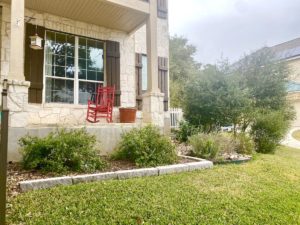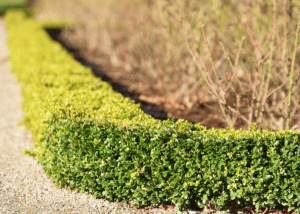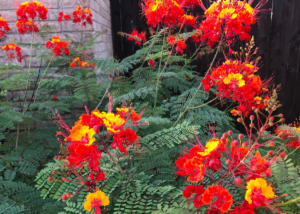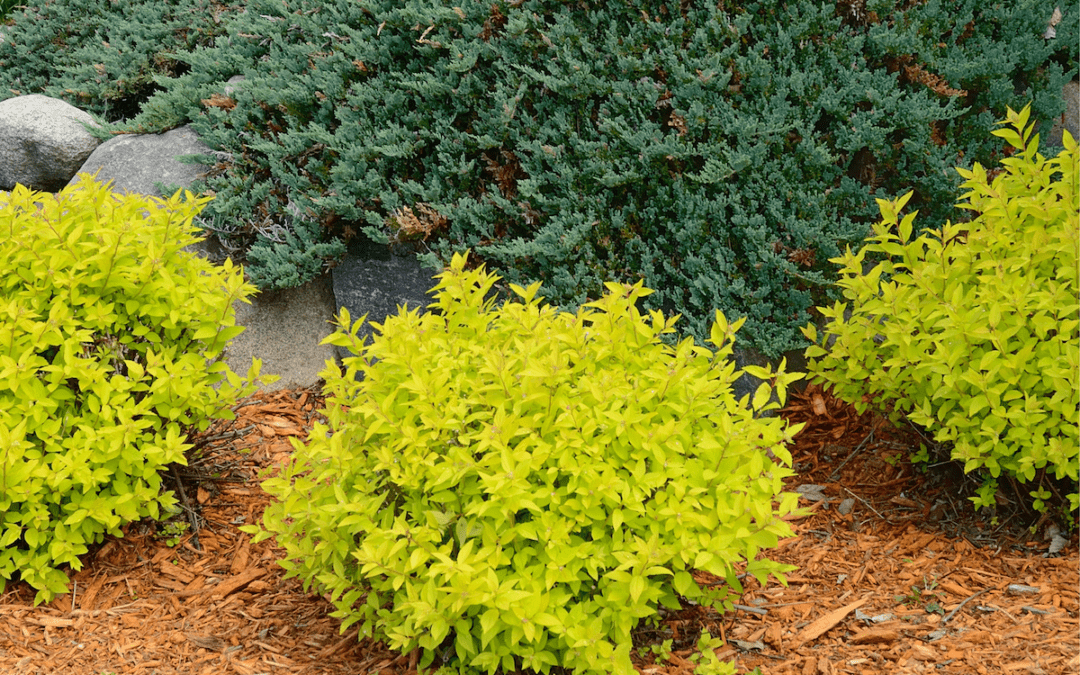Using shrubs as landscape plantings are a wonderful way to upgrade and add value to your homes. They can create interesting focal points or make wonderful backdrops to your perennial and annual gardens. Shrubs can provide structure to your landscape or provide privacy in specific areas. Have you heard terms like: foundation plantings, privacy plantings, planting in mass, etc… when it comes to landscaping? Those terms might not help you much if you don’t know exactly what they mean, so today I’m going to give you a quick rundown on the most common landscaping terms when it comes to planting shrubs. (I’ll offer a few other plant examples too, but shrubs are the main focus of this blog.)
Types of Landscape Plantings Using Shrubs


Foundation Plantings: These are generally shrubs that are planted somewhere around or along the home’s foundation. Sounds simple enough, right? These smaller sized shrubs offer homeowners an opportunity to cover up areas that may not be as appealing to the eye, such as raw concrete around the base of your home’s foundation, or any other feature you might not necessarily want to look at.
Foundation plantings are also those chosen for entryway shrubs. Many homeowners appreciate the look of two larger, symmetrical, evergreen shrubs flanking their front doorways. Corner shrubs are foundation shrubs or small trees that are generally taller than the rest of your plants and are used to aesthetically frame your home. Gap shrubs are also considered foundation plantings; they fill in areas between entryway shrubs and corner shrubs and other areas around your home’s foundation. (The pics above are examples of some foundations plantings, corner plantings, and gap shrubs dispersed in between. From the examples, you can see how you can make your foundations classic and tidy like the one on the right, or a little more natural and wild like the one on the left…mine is the wild one!)
When it comes to foundation plantings, it is imperative to do research to learn the mature size of the shrub you desire. You must provide ample space and plant the appropriate distance from your house to give shrubs enough room to fully mature, but not end up rubbing right up against your home. You also wouldn’t want to be scratched by thorny branches on your shrub every time you try to walk through the front door. You got me? Keep size in mind.


Privacy Plantings: When we say a shrub is a good privacy option, this generally means that the shrubs are taller varieties that grow in a dense form, leaving little to no open spaces between limbs and foliage. These shrubs can offer you a private retreat from those “too close” neighbors or provide a screen or barrier from a less than pleasant view. They can even provide protection and act as a windbreaker or even a sound barrier.
It’s a great idea to choose evergreen plants for privacy plantings so that they keep their foliage and continue their privacy attributes year round. Privacy plantings don’t always consist of shrubs; they can also be smaller sized trees whose canopies reach just above the fence line, or perhaps a row of bamboo, or strategically placed trellises adorned with evergreen vines. (Pictured above: Oleanders grow fairly quickly (2-3 feet per year), reaching and average 12′ tall x 10′ wide for a good privacy hedge. Star Jasmine trained on a trellis offers a private retreat.)
A few privacy planting options you may want to look into are: Xylosmas, Oleanders, Pineapple Guava, Wax Myrtles, Star Jasmine, Indian Hawthorne.


Mass Plantings: Mass plantings are when plants of similar color, texture and size are grouped together and planted closely in order to create a dramatic, and bold display. If you’ve ever seen Pink Muhly ornamental grass planted in mass, you have seen what I mean by a stunning display; when in bloom it can induce an audible gasp! You can often see seasonal mass plantings of annuals outside of neighborhoods or commercial shopping centers (pansies in the winter, vinca in the summer). Groundcovers are mass plantings too.
Hedges are a form of mass plantings for shrubs. A tight row of Baby Gem™ boxwoods (pic: left) pruned into a hedge can create a sharp looking border around a landscape. Flowering shrubs also look great planted in mass. Imagine the impressive display a group of brilliantly-blooming azaleas would make. My personal favorite is the mass planting of plumbago (pic: right) I have in my own yard. The clusters of blue flowers create a wave of color, kindred to the sea itself!


Focal Points: Focal point plants lead you straight to them, or at least they lead your eye. They are stand alone specimens, or they are smartly placed near other plants that you want to lead into. Focal point plants have some type of feature that draws the eye to them. The feature of this plant might be something like the abundance of fire-orange blooms on a Pride of Barbados. Of course you would want this plant in an area that would draw your eye. What a great way to treat your eyes to the zip-zip of visiting hummingbirds? A focal point plant might be a specimen with gorgeous color-changing foliage (think Japanese Maple with its blazing red leaves in fall), or a seasonal bloomer like one of our favorite Texas natives, the Redbud, which dazzles like no other in spring.
Extra tip. Focal points in your landscape don’t have to be plants either. A bubbling fountain, bird bath, or a tranquil garden bench can be something to treat your eyes as well.
I hope I’ve brought a little more clarity to some of these terms, and that it might help guide you a bit while you create your landscaping plans. Remember, the specimens mentioned are just the tip of the iceberg of what we have to offer you at Rainbow Gardens, so come on in, take a look around, and when in doubt ask, because we are here to help you out.
~The Happy Gardener, Lisa Mulroy

